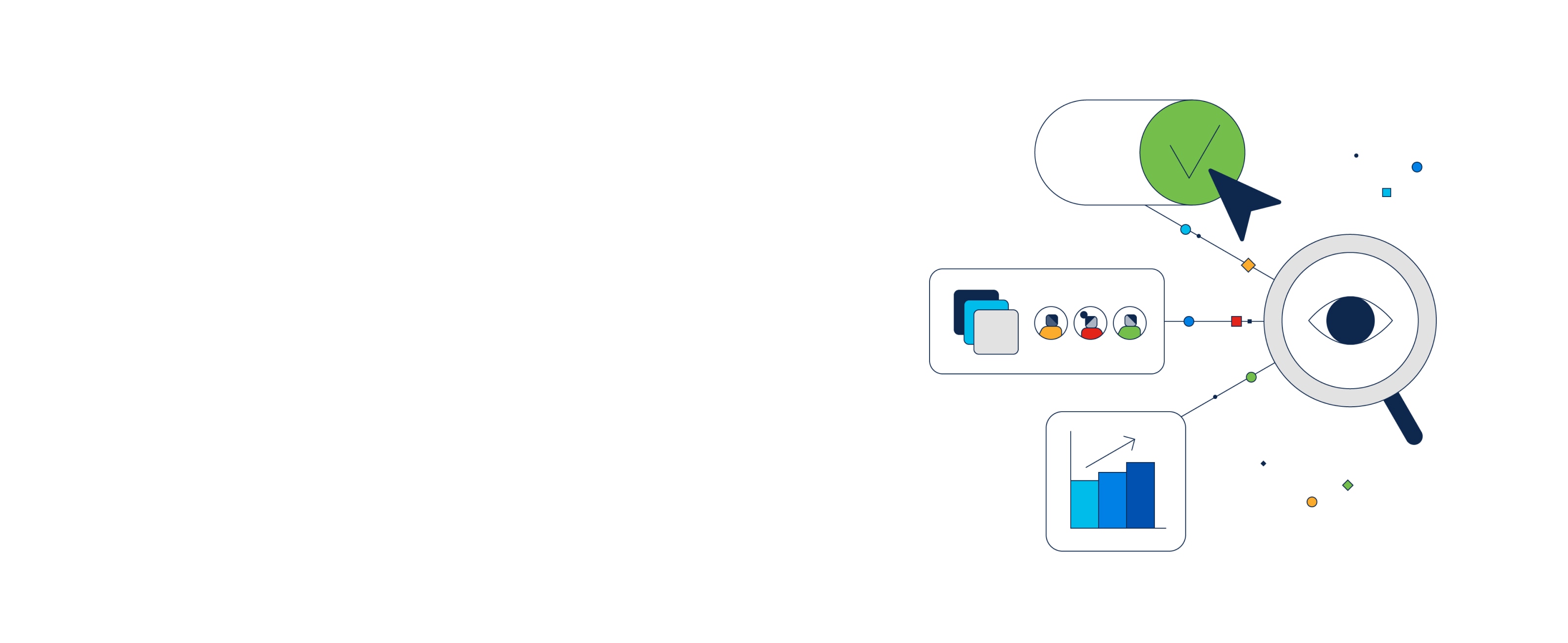The full stack observability difference
Cisco defines full stack observability as a solution that enables teams to correlate application performance to the entire application technology stack—connecting performance back to their business metrics.
Full stack observability tools help IT teams deliver better application experiences by letting them know where application issues arise and why they happened. They also help them prioritize the actions you need to take based on the impact to your business.
Full stack observability monitors the inputs (application and infrastructure stacks) and outputs (business transactions, user experiences, application performance) and provides cross—domain correlations and dependency mapping. It provides teams with shared connected experience to break down siloes with application performance and business context. It also alerts them to issues that are impacting the business performance of the application. It includes cross-domain correlation and dependency to inform teams exactly which areas are causing performance issues and the reasons.
With the business context of the application observed, teams can prioritize which issues have the largest impact on business and experience so they can respond efficiently. Teams can then take full stack actions across the stack for performance, optimization, and security.
Why is full stack observability needed?
Modern application development cycles and system complexity make it difficult to understand the root causes behind application performance issues. Simply observing each domain isn't enough. Enterprises need full stack observability to properly manage the complexities and remove blind spots.
Full stack observability correlates the entire technology stack to the customer's application performance metrics, business transactions and, ultimately, the key performance indicators (KPIs) for their business.
This connection to business outcomes is key, as almost three quarters (73%) of survey participants fear that the inability to link IT performance with business performance will be detrimental to their business. The ability to connect full stack observability with real—time business outcomes is essential to delivering first–class digital experiences and accelerating digital transformation.
What are the benefits of full stack observability?
Full stack observability helps organizations:
- Increase business impact and elevate business experience: Reduce mean times to identify issues and mean time to resolve issues to improve application uptime and performance and deliver a better end-user experience.
- Optimize business operations and reduce costs: Map app—to—infrastructure dependencies to prevent over–provisioning and lower costs.
- Reduce business risk: Strengthen application security from application development to runtime.
Full stack observability gives organizations:
- Full stack observability visibility: Gather, unify, and correlate data across multiple domains and multiple teams in real time to get a holistic understanding of system performance. Break down siloes, collaborate with multiple IT teams, and streamline workflows—backed by real—time information across your entire application infrastructure.
- Full stack observability insights: Isolate the root causes of application performance faster, optimize resource allocation, and get a clearer picture of application costs versus performance and how they affect the end—user experience.
Full stack actions
- Full stack observability actions: Get prioritized application recommendations based on data collected over time to better scale applications and accelerate application development cycles.
What use cases are enabled by full stack observability?
Full stack observability enables the use cases across three pillars:
Performance
- Hybrid application monitoring: Monitor performance of traditional and hybrid applications, often monolithic, hosted applications leveraging traditional infrastructure and hybrid cloud.
- Modern cloud—native application monitoring: Monitor performance of cloud—native applications, often microservices—based, distributed applications leveraging cloud technologies hosted on public or private clouds.
- Customer digital experience monitoring: Actionable, end—to—end insight into application experience, its underlying dependencies, and business impact.
- Application dependency monitoring: Assure the performance of managed and unmanaged (third-party) application services and APIs, including Internet and cloud network performance to those services.
Optimization
- Hybrid cost optimization: Lower costs by only paying for what you need in public cloud and by safely increasing utilization of on—premises assets.
- Application resource optimization: Improve and assure application performance by taking the guesswork out of resource allocation for workloads on—premises and in the public cloud.
Security
- Application security: Reduce business risk by actively identifying and blocking against vulnerabilities found in application run—times in production.
